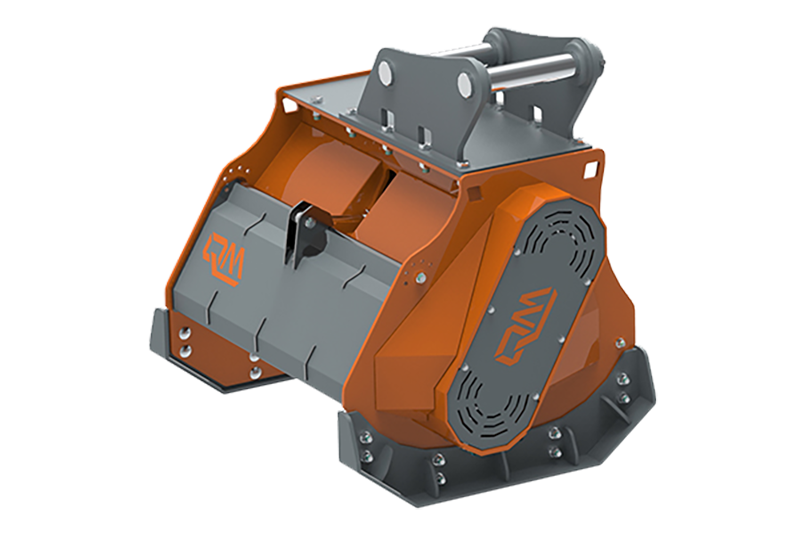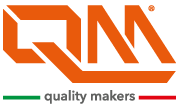FORESTRY MULCHER OPERATING COSTS: LET’S GET SOME CLARITY
The purchase of certain forestry products represents a significant investment for any agricultural or earthmoving company. To ensure efficient and profitable use, it is essential to understand the operating costs involved. This article aims to provide a fairly detailed analysis of the main factors that influence the operating costs of a forestry mulcher, helping you make good decisions and plan your budget effectively. We will take a machine suitable for a 20-ton excavator with 32 tools as an example.

The Importance of Accurate Cost Assessment.
Before delving into the details, it is important to note that the operating costs of a forestry mulcher can vary greatly depending on several factors, such as the specific model, size, power, intensity of use, type of vegetation to be treated, and soil conditions. Therefore, an accurate assessment of costs must take all these variables into account.
Fixed costs: a long-term investment
Fixed costs are the main component of the initial investment and refer to expenses that remain constant over time, regardless of the use of the machine. The main fixed costs include:

- Depreciation. It represents the distribution of the cost of the forestry mulcher over its estimated useful life, expressed in working hours. Considering, for example, a purchase cost of 18,000 and an estimated useful life of 15,000 hours, the hourly depreciation will be 1.20€. Obviously, the longer the useful life of the machine, the lower the impact of depreciation on hourly operating costs will be.
- Insurance. Insurance coverage is important to protect your investment from damage or accidents. The annual insurance premium, estimated at between 500 and 600 euros, should be spread over the expected hours of work in a year; for example, with 2,080 hours of machine work in a year, you will get an hourly insurance cost of between 0.24 and 0.29 euros.
- Interest on financing. If you have chosen to purchase the forestry mulcher through financing, interest is an additional fixed cost to be considered when calculating overall operating costs.
Variable costs: the dynamics of utilization
They are closely related to the actual use of the forestry mulcher and can fluctuate according to the intensity and type of work performed. The main variable costs to be considered include:
- Fuel. fuel consumption is one of the most significant cost items, especially for large machines. In our case, considering an average consumption of 20 liters per hour for a 20-ton excavator engaged in chopping work, and the current price of diesel fuel, this represents a considerable operating cost.
- Maintenance. Routine maintenance, mainly includes weekly lubrication with about 1 kg of grease at a cost of 8€/kg to ensure proper operation and longevity of the machine. In addition, it is a good idea to budget for any extraordinary maintenance or unexpected repairs.
- Transportation costs. If you plan to move the forestry mulcher frequently from one site to another, transportation costs, including fuel and operator time, should be included in the operating budget. For a 20-ton excavator, the transportation cost can average between 800 and 1,000 euros per trip.
- Hydraulic oil. The forestry mulcher uses the excavator’s hydraulic oil, which usually does not require periodic topping up but rather a complete annual replacement. With a replacement of about 200 liters, it costs around 1,000 euros. Consequently, the hourly cost of hydraulic oil is about 0.48€.
- Operator cost: the operator’s hourly wage, including any contributions and allowances, is around €25 per hour and is a significant variable cost to consider.
- Replacement teeth. Forestry mulcher teeth are subject to wear and tear and need to be replaced periodically, usually every two years at most. With 32 teeth at a cost of 55€ each, the total cost of replacement teeth is 1,760€. Periodic replacement of tines is essential to maintain machine efficiency and reduce fuel consumption. A forestry mulcher with standard use, for which this expense will be faced every two years, will generate an hourly cost of about 0.42€ for replacement tools.
Benefits and final considerations
Despite the operating costs, the use of a forestry mulcher offers many advantages, including theaupping productivity. In fact, the forestry mulcher makes it possible to carry out land clearing and maintenance work quickly and efficiently, reducing work time and definitely increasing overall productivity. Another strong point is the versatility. This machine can be used for a wide range of applications, from clearing forested areas to preparing the ground for new plantations. Finally, the safety. The forestry mulcher makes it possible to work in total comfort, preferring to safeguard operating personnel, even in areas that are difficult to access or have steep slopes, and significantly reduces the risk of work accidents.
In Conclusion.
In conclusion, evaluating the operating costs of a forestry mulcher is a key step in ensuring efficient and profitable use of this machine. By carefully considering both fixed and variable costs, and comparing them with the benefits offered by the machine, you will be able to optimally consider and plan your investment.
Remember that every situation is unique and operating costs may vary depending on your specific needs and working conditions. Therefore, we recommend that you always consult with industry experts or, better yet, the forestry mulcher manufacturer to get a personalized and timely estimate of costs and benefits.
